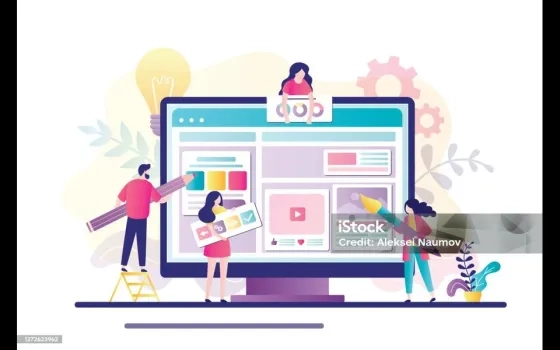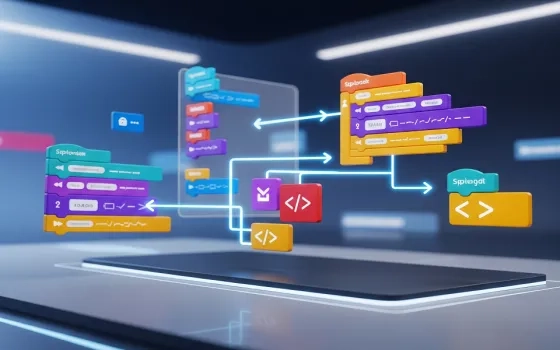Design innovation is the process of developing new ideas and solutions that are both innovative and practical. It involves thinking creatively and critically about how technology can be used to solve problems. The goal of design innovation lies in improving the lives of people around the world.
Design Innovation and User-centred Design
At the core of design innovation lies the essential component of user-centred design, which places the needs and desires of users at the vanguard of the design process. By adopting a human-centred approach to design, the focus is shifted towards the user experience, leading to the development of solutions that are intuitive, user-friendly, and aesthetically appealing.
The centrality of user-centred design in shaping the future of technology cannot be overstated. It guarantees that technology is designed with people at its core, and in so doing, it ensures that the resultant solutions are not only innovative but also practical and useful. This becomes increasingly critical as technology continues to permeate every facet of our daily lives, making it essential to design solutions that are tailor-made to meet the unique needs and desires of users.
In essence, user-centred design involves empathizing with the end-users, gaining a profound understanding of their needs, and designing solutions that are tailored to meet these needs. The focus is on delivering an experience that is intuitive, accessible, and user-friendly, thereby enabling users to effortlessly interact with technology. This approach is indispensable in driving innovation and transforming the way we interact with technology.
Ultimately, the success of design innovation hinges on the adoption of a user-centred approach. It is by creating solutions that are tailored to meet the unique needs and desires of users that designers can develop innovative solutions that not only address current challenges but also offer a glimpse into the future of technology. As such, user-centred design is an indispensable tool in shaping the future of technology and enhancing the human experience.
Design Innovation and Sustainability
Sustainability is another critical component of design innovation. With the growing concerns about climate change and environmental degradation, it is essential to develop technologies that are sustainable and environmentally friendly. This means considering the entire lifecycle of a product, from its design to its eventual disposal.
Design innovation is driving the development of sustainable technologies that are changing the world. For example, the development of electric cars, solar panels, and wind turbines are all examples of sustainable technologies that are transforming the way we generate and consume energy. By prioritizing sustainability in the design process, designers can develop solutions that have a positive impact on the environment.
Design Innovation and Accessibility
Accessibility is another important consideration in design innovation. Technology has the potential to improve the lives of people with disabilities by providing new tools and resources that can help them overcome barriers and achieve their goals. However, to be effective, these solutions must be designed with accessibility in mind.
Design innovation is driving the development of accessible technologies that are changing the world. For example, the development of text-to-speech technology, screen readers, and other assistive technologies are making it easier for people with disabilities to access information and participate in society. By designing solutions that are accessible to everyone, designers can create technologies that are more inclusive and have a greater impact on society as a whole.
Design Innovation and the Future of Technology
The role of design innovation in shaping the future of technology is significant. It is driving the development of new technologies that are changing the world and improving the lives of people around the globe. Here are a few examples of how design innovation is shaping the future of technology:
1. Artificial Intelligence:
Artificial intelligence (AI) is transforming the way we live and work. AI is revolutionizing our technology interactions, from virtual assistants to self-driving cars and drones. The development of AI technologies that are more intuitive, efficient, and responsive to user needs is being driven by design innovation.
2. Virtual and Augmented Reality:
Virtual and augmented reality (VR/AR) are technologies that are transforming the way we experience the world. From immersive gaming experiences to virtual tours of museums and art galleries, VR/AR is changing the way we interact with information and entertainment. Design innovation is driving the development of VR/AR technologies that are more immersive, intuitive, and user-friendly.
3. Internet of Things:
The Internet of Things (IoT) is a network of connected devices that can communicate with each other and with people. From smart homes and wearable devices to industrial automation and smart cities, IoT is transforming the way we live and work. Design innovation is driving the development of IoT technologies that are more secure, efficient, and easy to use.
4. Robotics:
Robotics is another field where design innovation is driving the development of new technologies. From autonomous vehicles to robotic surgery and manufacturing, robots are changing the way we work and interact with technology. Design innovation is driving the development of robots that are more intuitive, efficient, and safe to use.
5. Accessibility:
Design innovation can improve accessibility in technology by creating solutions that are user-friendly and inclusive for all individuals, regardless of their physical abilities or disabilities. This can range from developing software with features like text-to-speech for visually impaired individuals to designing websites that are compatible with assistive technology.
6. Sustainability:
Design innovation can also play a significant role in developing sustainable technology solutions that reduce our environmental impact. This can be achieved by creating products that are made from eco-friendly materials, consume less energy, and can be easily repaired or recycled at the end of their life cycle.
7. Data Visualization:
As technology continues to generate vast amounts of data, design innovation can help make this data more accessible and understandable through visualization. This can be achieved through the development of tools that can analyze and interpret data, creating interactive dashboards, and designing user interfaces that are visually appealing and easy to use.
8. Augmented and Virtual Reality:
Design innovation is driving the development of AR/VR that have the potential to revolutionize industries like education, healthcare, and entertainment. These technologies can provide immersive experiences that allow individuals to interact with virtual objects and environments, making education and training more engaging and interactive.
9. Cybersecurity:
As technology becomes more pervasive in our daily lives, the importance of cybersecurity has never been greater. Design innovation can help improve cybersecurity by creating solutions that are more secure and less vulnerable to cyberattacks. This can include developing software with strong encryption protocols, designing hardware with built-in security features, and creating user interfaces that promote safe online behaviour.
The Future of Design Innovation
As technology continues to evolve, the role of design innovation in shaping the future of technology will become even more important. The challenges we face as a society, from climate change to social inequality, require innovative solutions that can only be developed through a collaborative and interdisciplinary approach.
Design innovation is not just about creating new products and technologies. It is about developing solutions that are socially responsible, sustainable, and accessible to everyone. It is about understanding the needs and desires of users and creating solutions that improve their lives.
The future of design innovation is exciting, and it holds enormous potential for driving positive change in the world. As designers continue to push the boundaries of what is possible, we can expect to see new and innovative technologies that transform the way we live, work, and interact with each other.
In Conclusion
Design innovation is a transformative and indispensable element in the evolution of technology. And, it possesses the potential to revolutionise the world and uplift people’s lives globally. By weaving together a rich tapestry of creativity, functionality, and sustainability, designers can create pioneering solutions that surpass conventional boundaries and cater to the diverse needs and desires of users.
Through the concerted efforts of design innovation, AI technologies are rapidly evolving into more sophisticated and responsive systems. By amalgamating the power of AI with the dynamism of design innovation, we can create solutions that push the boundaries of innovation, bringing forth a new era of technological progress and creativity.
As we venture into the future, it is clear that design innovation will continue to play a crucial role in shaping the technologies that will define our lives. By embracing a collaborative and interdisciplinary approach, designers and innovators can overcome challenges, identify opportunities, and craft solutions that address the complex issues of our society. Together, we can unleash the transformative power of design innovation to create a better and brighter tomorrow for all.






























